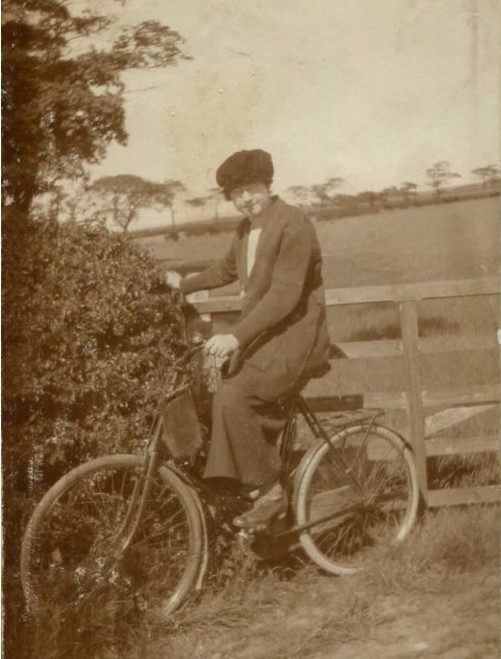The freedom and mobility offered by the bicycle enhanced the lives of women in Britain during the late nineteenth and early twentieth centuries. Of course, bicycles cost money, so they were not available to everyone, but they were within the grasp of many. The 1890s was even referred to as the era of the bicycle craze and became associated with contemporary feminist movements. Women, traditionally seen as belonging in the home or domestic sphere, could travel further to be more involved in their communities, work or trips into the countryside for leisure.
A bicycle club was set up by women students at Edge Hill as early as 1895. Unfortunately, no photos of women students cycling have survived from that period but below there are two fabulous photographs from the 1920s. In the image below we can clearly see how this student travelled to the countryside around Ormskirk as her bicycle is propped against a fence in the background.

In addition to enabling women greater mobility, the bicycle also had an important impact on women’s clothing. Bicycles were designed for women with a drop frame, without a high cross bar, so they could be ridden by women wearing a long skirt.
The physical demands of cycling meant that designs appeared for divided skirts and bloomers (rational dress) for women cyclists. Satirists and journalists often poked fun at women wearing bloomers or even criticised them as being masculine! The image to the left here is of a Victorian woman in bloomers.


It doesn’t look like this student at Edge Hill during the 1920s is wearing bloomers, she may be wearing a divided skirt, or many women continued to wear skirts while cycling.
You could consider writing a short historical piece on the way in which bicycles or other vehicles have improved the lives of young people/women, or perhaps had a detrimental impact.
